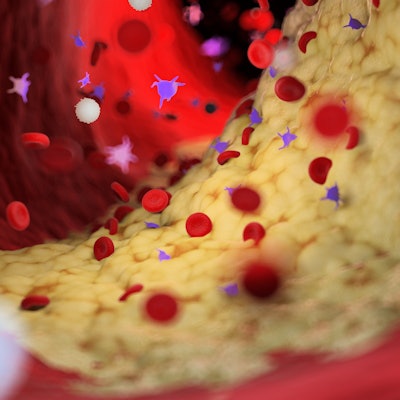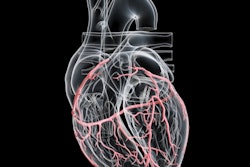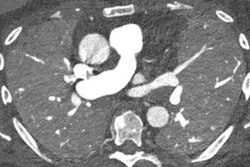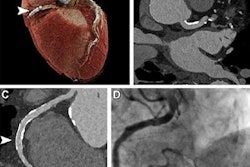
Lung cancer screening with low-dose CT (LDCT) -- specifically photon-counting CT (PCCT) -- offers an opportunity to assess a person's coronary artery calcification (CAC), according to a presentation delivered at the ARRS meeting in Honolulu.
Using LDCT to identify and track two diseases at once makes patient care more effective, said presenter Tyler Cook of Virginia Commonwealth University.
"Low-dose CT for lung cancer screening provides opportunity to scan for two diseases [at one time]," she explained.
Cardiovascular disease is the number one killer of both men and women, not only in the U.S. but also around the world. Smokers are two to four times more likely to develop heart disease than nonsmokers, and more than six times more likely to suffer a fatal heart attack than nonsmokers, according to Cook.
"Coronary artery calcification is a strong independent predictor of coronary artery disease and future major adverse cardiac events," she said. "CAC increases with tobacco use and CAC increases mortality."
The team compared PCCT to invasive coronary CT angiography (CCTA) for the evaluation of stenosis. (CCTA is the first-line method for evaluating coronary artery disease, but it does have a tendency to overestimate coronary stenosis, Cook explained. PCCT offers higher image quality and better spatial resolution and contrast-to-noise ratio, which translates into more accurate assessment.)
"We sought to investigate whether there was a relationship between the total qualitative CAC score and/or the left main CAC score and total cumulative pack years of smoking," she said. She noted that the presentation was aimed at radiology residents, radiologists participating in lung cancer screening programs, internal medicine and primary care physicians, and cardiologists.
The study included 41 patients and 984 lung cancer screening scans taken between 2013 and 2021. Patients underwent both PCCT and invasive coronary angiography; the PCCT images were processed with virtual monoenergetic imaging reconstructions to explore the accuracy of stenosis measurements of CCTA using PCCT.
On average, cumulative pack years among the study cohort were 50. Most patients were white and 60% were current smokers. Cook's team tracked age, sex, body mass index (BMI), smoking status, and pack years.
The group found a statistically significant difference between total CAC scores and cumulative pack years smoked, as well as a statistically significant difference between the left main coronary artery CAC score and cumulative pack years smoked.
"We found a direct correlation between total cumulative pack years of tobacco use, total qualitative coronary artery calcium score and left-main coronary artery calcium score," Cook said.
The study shows that PCCT improves the accuracy of CCTA stenosis measurements, she concluded.
"Virtual monoenergetic imaging reconstructions have potential to improve accuracy of stenosis quantification on PCCT CCTA," she said.





















